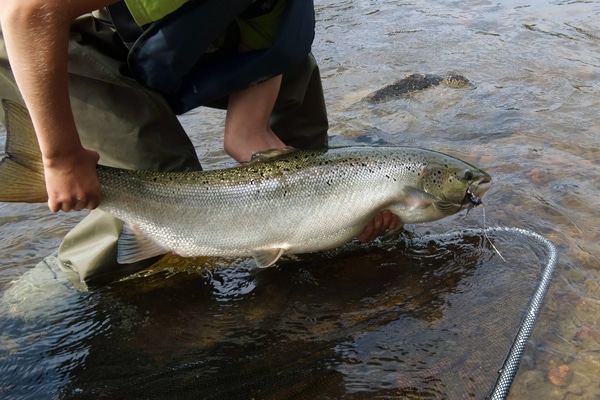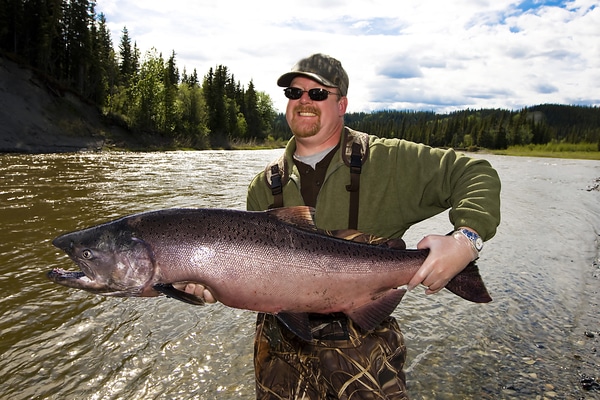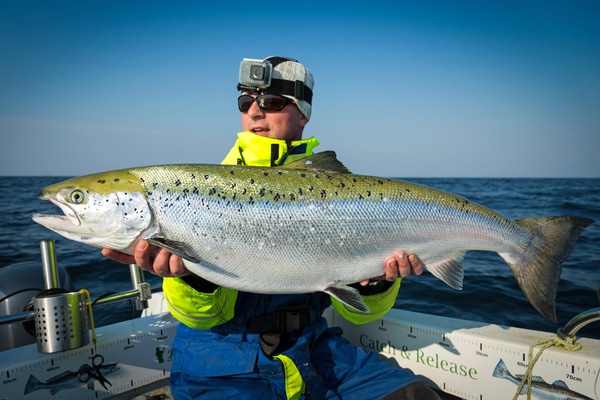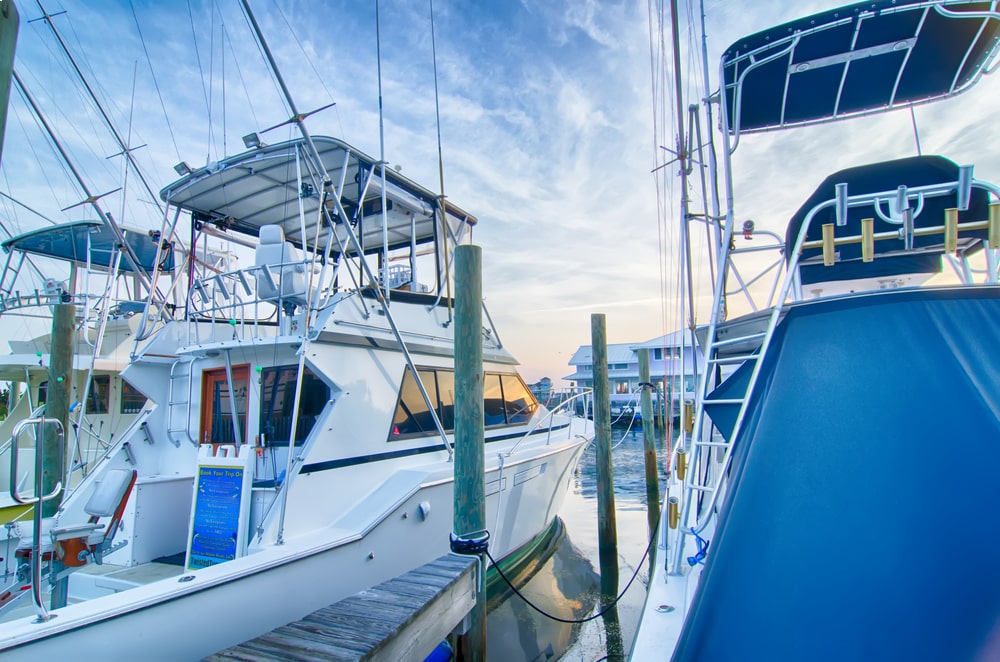Best Tactics for Catching Salmon in San Francisco Bay
Generations of fishermen are always looking forward to the salmon season every year. Catching salmon in San Francisco Bay is popular with anglers from Northern California. For the last two years, California waters have been closed to commercial and sport salmon fishing. This was to address the dwindling salmon population on the West Coast for the last decade.
This year, the season opened in April and would last until 31 October. After the Pacific Fishery Management Council voted to approve a brief salmon season.
More information can be found on the Pacific Fishery Management Council page here.
Most commercial fishermen are disappointed about this decision. Recreational anglers are excited to go back into the water for a chance to take home the King. An experience that they’ve been missing for so long.
What are salmon and how do I catch them?
Salmon is a common name for various species of fish in the Salmonidae family. The major salmon species fall under two genera.
- Salmo found in the North Atlantic tributaries, and
- Oncorhynchus found in the Pacific.
Atlantic salmon is a member of Salmo. While Chinook, Chum, Coho, Pink, Masu, Sockeye salmon comprise the Pacific salmon.
While salmon are native to North Atlantic waters and the Pacific Ocean, they’ve been farmed all over the world.

Salmon are unique because they are anadromous. It means they are born in freshwater. But spend most of their lives in saltwater before returning to freshwater to spawn. After hatching and spending some time in freshwater, they spend most of their life in saltwater. Only returning home after two or three years to spawn. Most fish cannot handle the change in water temperature and salinity between saltwater and freshwater. This ability makes the salmon amazing.
Trolling for salmon
Experienced anglers consider trolling as one of the most consistent methods for catching salmon. Baits such as frozen anchovies or herring are trolled with a downrigger. This keeps them within striking distance to the target salmon. The downrigger holds your line at the desired depth. The fishing line is attached to a line release that will push it back up when there’s a bite. Most commercially caught King and Coho salmon are caught by trolling.
Trolling with downriggers is one of the most effective approaches to use, particularly when fishing at varying depths. Each downrigger can have two lines in different depths. This means better water column coverage. If you do this while slowly circling the school of baitfish, you will have the salmon biting in no time.
A sinker release rig with a 2-3 pound lead ball attached to the line can be used by those without downriggers. It follows the principle of using a downrigger but in an ingenious way. The weight is attached to the line instead of a downrigger cable. A spring-loaded sinker release device allows it to drop when the salmon bites.
Fishing tackle and bait supplies in San Francisco Bay
Most large charter boats cater to up to 20 people at a time. With this number of people, the use of downriggers is not possible. Instead, anglers deploy sinker rigs spread around the boat. These sinkers allow a big group of people to troll from a single boat and avoid tangles.
Find a fishing charter in San Francisco, here.
Drift mooching for salmon
Another strategy for catching salmon is drift mooching, particularly in the summer months. It’s such a simple technique but a very rewarding one. Especially if you’re looking for the thrill of hooking up a Chinook.
In drift mooching, you run the boat’s motor off and let it drift with the current. You lower the bait in the water with weight and wait for the salmon to bite. Once the salmon is biting, all you have to do is win battle against the King as it fights its way to freedom.
Mooching is very simple, but the satisfaction it can give you is undeniable. Those looking for the experience rather than the volume of the catch should try mooching for salmon.
Mooching also doesn’t need special gadgets or equipment. Simply, your trusted rod, line, reel, sinker, some baits. Plus lots of concentration and patience.
Flies and lures for salmon in rivers and streams
In rivers and streams, the techniques vary widely from flies to spoons and large spinners. Salmon fishing upstream can be very enjoyable. This is because it may involve hiking and exploring remote areas. Plus, the environment is peaceful and the fish are abundant.

What types of salmon are around San Francisco?
The West Coast is blessed to have five major species of salmon in its waters. These are:
- Chinook, also known as King salmon,
- Coho or silver salmon,
- Chum, sometimes referred to as dog salmon,
- Sockeye or red salmon, and
- Pink salmon, also known as humpy.
San Francisco Bay
The San Francisco Bay is popular for its great salmon productivity. Chinook reigns supreme here but there’s plenty of Coho as well.
The past few years may have seen a decline in the number of salmon in its waters. But salmon fishing remains one of the best attractions of the Bay. Where else can you have a chance to land a massive Chinook while basking in the beauty of the Golden Gate Bridge. Particularly during the summer and fall months?
The Gulf of Farallones
The Gulf of Farallones, just west of the Golden Gate Bridge, provides a great opportunity for spawn season fishing. Salmon congregate here during the early spawn, making it a good spot to fish. Major salmon species can be caught here, particularly the Chinook during October.
Coho can be found in Lagunitas Creek and other tributaries at Samuel P. Taylor State Park. Pillar Point Harbor and Half Moon Bay, meanwhile, are also good spots for the King.
Best Spots for Catching salmon in San Francisco
The Pacific Ocean is home to many salmon species such as the Chinook, Coho, Chum, Pink, and Sockeye species. San Francisco Bay is one of the best places to fish for salmon on the West Coast. Salmon spend a long time here until they are ready to go upstream to spawn.
There’s a famous route in the bay known as “The Salmon Highway.” This is the route that salmon follow going to their spawning place in the fall months. It starts from Marin County through the Golden Gate Bridge, all the way to Carquinez Strait.
The Salmon Highway offers a great opportunity for anglers to hook massive Chinooks. With catches ranging from 20 to 40 pounds. It has proven to yield excellent catches if you’re there at the right time of the season. Pillar Point Harbor and Half Moon Bay are also good bets to see salmon action. The Gulf of the Farallones, as mentioned earlier, is also popular.
Also, the bay is home to a system of rivers that see salmon during the fall seasons. Big Break Bay is popular during mid-spawn. It offers a place to catch salmon resting in its peaceful waters.

Top tips for catching salmon
Every angler will have their tips for catching salmon that they swear by.
Best bait or lures for catching salmon
Many would agree that herring is the best bait for salmon. It can either be the whole or cut plug herring. Whether you choose one over the other is up to you. The important thing to note is that it must be spinning to catch salmon. For other fish like tuna, a spinning bait is a no-no but for salmon, it’s a must. Your bait will not catch as many if it’s not spinning. Most anglers use a variety of rigs to ensure this, which you can find in most tackle shops.
Fishing tackle and bait supplies in San Francisco Bay
There’s a wide variety of lures to add attraction and visibility to baits. Some like to use a flasher with a hoochie, a flasher with a herring. Others include mini squid hoochies, twinkle skirts, and many other types of lures. It all depends on your technique and expertise, location, and what type of salmon you’re looking to catch.
Techniques for catching salmon
When trolling, one trick is to set a variety of setups in varying depths. This way, you can have an idea of what works at what depth during that particular trip.
When mooching, the important thing is to keep the line tight and not let it slack. Salmon swim upward when they feed, and they travel towards the surface after biting. They can be at the surface in a blink, and if there’s slack in the line, lifting the rod won’t be enough to hook them.
Constant reeling is a must to ensure that once the salmon reaches the surface, it’s properly hooked. Then it won’t be able to unhook even if it goes wild. Steady pressure should be applied, but not too much.
They may not be as powerful as tuna, but they will give you a fight just out of net range. If you can keep your cool and wits, a king may be your reward.
One last tip, if you’re joining a party boat, choose your position wisely.
Though some may think that your position doesn’t matter. Experienced anglers will tell you that more often than not, fishing off the rear will get you the most fish. The bow is also a good spot for catching fish.
Find a salmon fishing charter in San Francisco, here.
Best times for catching salmon in San Francisco
A typical salmon season in San Francisco would run from late April to October. California is also home to many waterways where salmon can be found from November to January.
This year, the Pacific Fishery Management Council shortened the salmon season. Running from June 26 to October 31. This was due to the low number of Chinook coming from the Klamath and Sacramento Rivers.

Salmon Fishing Charters on San Francisco Bay
Below are some of the popular party boats doing salmon fishing charters in San Francisco
Blue Runner Sportfishing run dedicated salmon fishing trips during the salmon season. Being based in Sausalito, they have the fastest access to the best fishing grounds, as far as Point Reyes to the North, the Farallon Islands to the west or Half Moon Bay to the south.
Flash Sport Fishing Charters run guided salmon fishing trips. Steve Talmadge has over 50 years fishing experience in the Bay area. They will take you to the hotspots around the bay, when it comes to salmon fishing. Set up with custom-made rods and reels, as well as tackle and bait, you have everything you need to catch a salmon.
San Francisco Fishing Charters are based at Hyde St, Fishing Harbor in San Francisco. Their fishing charters are geared towards a comfortable and fun experience for all anglers. Their charters carry a maximum of 6 passengers, gallowing everyone plenty of room and comfort.
Find a salmon fishing charter in San Francisco, here.
Limits and restrictions on catching salmon in San Francisco
The size limit for salmon in San Francisco is set at 20 inches, and a daily bag limit of two Chinook salmon per day. Retention of Coho or silver salmon is prohibited in all California ocean fisheries.
They also changed the boundary line between the northern management areas. It is now as per the current groundfish management boundary line.
Gear Restrictions while fishing for salmon
Only single barbless hooks are allowed for trolling. Only single point, barbless circle hooks are allowed for mooching. No more than two hooks are allowed while mooching. And the distance between the two hooks should not be more than 5 inches.
If you’re planning a salmon fishing trip, visit the California Department of Fish and Wildlife salmon webpage. You will find detailed and updated information on limits and restrictions.
For up to date fishing restrictions information, click here
A final word on fishing for salmon in San Francisco Bay
Salmon fishing in San Francisco has always been a popular activity. Coming to the bay and taking home the King is probably a dream of any angler here. Hopefully, this industry can still grow in the next couple of years so that many others can enjoy this experience of a lifetime.
For more information regarding fishing for salmon in San Francisco Bay.
- Click here to see the Pacific Fisheries Management Council salmon page.
Tight lines and good luck catching your next salmon